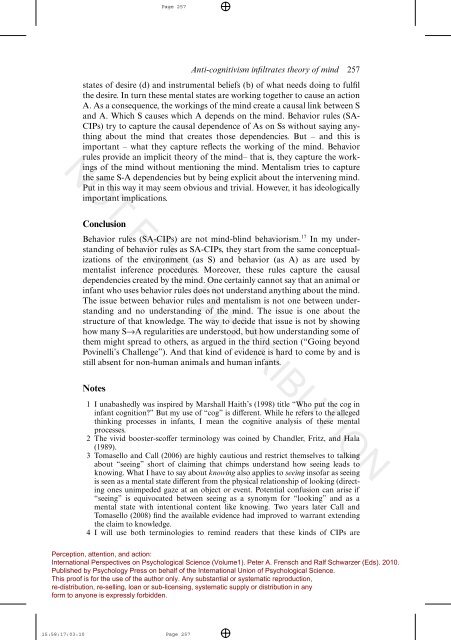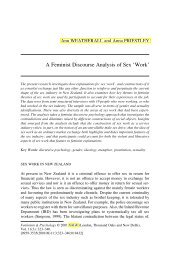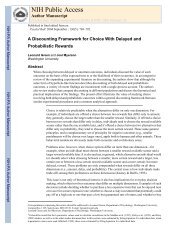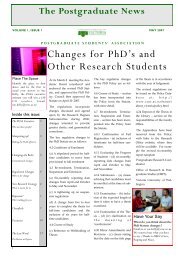Perner 2010.pdf
Perner 2010.pdf
Perner 2010.pdf
Create successful ePaper yourself
Turn your PDF publications into a flip-book with our unique Google optimized e-Paper software.
Page 257Anti-cognitivism infiltrates theory of mind 257states of desire (d) and instrumental beliefs (b) of what needs doing to fulfilthe desire. In turn these mental states are working together to cause an actionA. As a consequence, the workings of the mind create a causal link between Sand A. Which S causes which A depends on the mind. Behavior rules (SA-CIPs) try to capture the causal dependence of As on Ss without saying anythingabout the mind that creates those dependencies. But – and this isimportant – what they capture reflects the working of the mind. Behaviorrules provide an implicit theory of the mind– that is, they capture the workingsof the mind without mentioning the mind. Mentalism tries to capturethe same S-A dependencies but by being explicit about the intervening mind.Put in this way it may seem obvious and trivial. However, it has ideologicallyimportant implications.NOT FOR DISTRIBUTIONConclusionBehavior rules (SA-CIPs) are not mind-blind behaviorism. 17 In my understandingof behavior rules as SA-CIPs, they start from the same conceptualizationsof the environment (as S) and behavior (as A) as are used bymentalist inference procedures. Moreover, these rules capture the causaldependencies created by the mind. One certainly cannot say that an animal orinfant who uses behavior rules does not understand anything about the mind.The issue between behavior rules and mentalism is not one between understandingand no understanding of the mind. The issue is one about thestructure of that knowledge. The way to decide that issue is not by showinghow many S→A regularities are understood, but how understanding some ofthem might spread to others, as argued in the third section (“Going beyondPovinelli’s Challenge”). And that kind of evidence is hard to come by and isstill absent for non-human animals and human infants.Notes1 I unabashedly was inspired by Marshall Haith’s (1998) title “Who put the cog ininfant cognition?” But my use of “cog” is different. While he refers to the allegedthinking processes in infants, I mean the cognitive analysis of these mentalprocesses.2 The vivid booster-scoffer terminology was coined by Chandler, Fritz, and Hala(1989).3 Tomasello and Call (2006) are highly cautious and restrict themselves to talkingabout “seeing” short of claiming that chimps understand how seeing leads toknowing. What I have to say about knowing also applies to seeing insofar as seeingis seen as a mental state different from the physical relationship of looking (directingones unimpeded gaze at an object or event. Potential confusion can arise if“seeing” is equivocated between seeing as a synonym for “looking” and as amental state with intentional content like knowing. Two years later Call andTomasello (2008) find the available evidence had improved to warrant extendingthe claim to knowledge.4 I will use both terminologies to remind readers that these kinds of CIPs arePerception, attention, and action:International Perspectives on Psychological Science (Volume1). Peter A. Frensch and Ralf Schwarzer (Eds). 2010.Published by Psychology Press on behalf of the International Union of Psychological Science.This proof is for the use of the author only. Any substantial or systematic reproduction,re-distribution, re-selling, loan or sub-licensing, systematic supply or distribution in anyform to anyone is expressly forbidden.15:58:17:03:10Page 257






